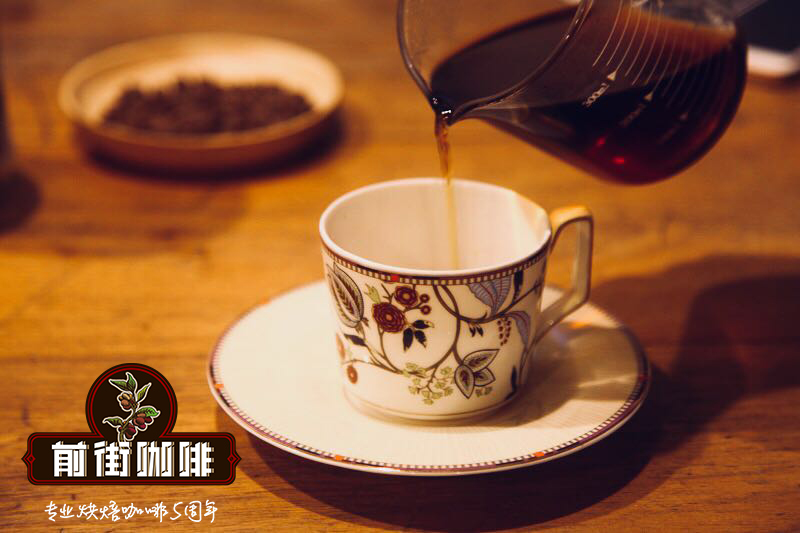The Cultural Story of the Origin and Development of Brazilian Coffee beans

Professional coffee knowledge exchange more coffee bean information please follow the coffee workshop (Wechat official account cafe_style)
When the Portuguese discovered Brazil in 1500, only Indians lived in the country. Europeans have introduced several new drinks, such as fruit juices, tea from several plants, and even an alcoholic beverage made from cassava. Just a few decades later, Brazil imported thousands of black slaves from Africa; these slaves were used as labor for sugar cane farms. The slaves were the first to taste the drink left over from sugar; the drink was later called cachaca.
It was not until 1727 that the first coffee tree was planted in Brazil. Rumor has it that the military Francisco de Mello Parherta used his charisma to persuade a woman in French Guiana to give him samples of coffee seeds, which were then smuggled to Brazil.
Brazilian coffee beans
Brazilian coffee beans
These seeds will change the history of the country. Brazil's economy is based on the use of slave labor to produce sugar in the northeastern states. Slavery continued, but coffee production moved to the southern states, where coffee seeds adapted better.
Good natural conditions and cheap labor made Brazil the world's largest exporter of coffee; in the last decades of the 19th century and the first decades of the 20th century, Brazil almost monopolized the international coffee market. Brazil's economy is completely dependent on coffee (and coffee farmers).
Rio Grande Island Brazil
Rio Grande Island Brazil
Around the middle of the 19th century, for humanitarian and economic reasons, Brazilian coffee farmers realized that slavery would not last long. Farmers are asking the government to stimulate emigration of those who can help coffee plantations.
For decades, many immigrants have come to Brazil with the specific aim of working on coffee farms. The largest number of people are Italians, but there are also a large number of Germans, Spaniards, Poles, Arabs, Japanese and many other countries.
The state of Sao Paulo has a large area of purple land (suitable for growing coffee) and has become Brazil's main producer and major economic and political centre. Later, the profits of coffee (and the labor skills of immigrants) will be used to finance the country's industrialization. This explains why Sao Paulo is still Brazil's largest and richest state.
So, if you look at the rich and diverse culture of Brazil today, one might say that this is largely due to coffee.
END
Important Notice :
前街咖啡 FrontStreet Coffee has moved to new addredd:
FrontStreet Coffee Address: 315,Donghua East Road,GuangZhou
Tel:020 38364473
- Prev

Why is soe cheaper than hand-made coffee beans which tastes better? description of the flavor characteristics of SOE espresso
Professional coffee knowledge exchange more coffee bean information please follow the coffee workshop (Wechat official account cafe_style) PanamaHartmannAnaerobicNaturalGesha minority optician Panama Hartmann Manor anaerobic sun classic Rose Summer Coffee Bean style
- Next

Costa Rican coffee origin story Costa Rican coffee culture Costa Rican coffee story
For more information on coffee beans, please follow the Coffee Workshop (official Wechat account cafe_style) Coffee History of Costa Rica when we landed in San Jose, we saw from the sky Costa Rica's lush green valleys and beautiful mountains, which is not yet the tip of the iceberg of affluence in this country. The biodiversity here accounts for about 5% of the world's biodiversity, per 10,000.
Related
- Beginners will see the "Coffee pull flower" guide!
- What is the difference between ice blog purified milk and ordinary milk coffee?
- Why is the Philippines the largest producer of crops in Liberia?
- For coffee extraction, should the fine powder be retained?
- How does extracted espresso fill pressed powder? How much strength does it take to press the powder?
- How to make jasmine cold extract coffee? Is the jasmine + latte good?
- Will this little toy really make the coffee taste better? How does Lily Drip affect coffee extraction?
- Will the action of slapping the filter cup also affect coffee extraction?
- What's the difference between powder-to-water ratio and powder-to-liquid ratio?
- What is the Ethiopian local species? What does it have to do with Heirloom native species?

